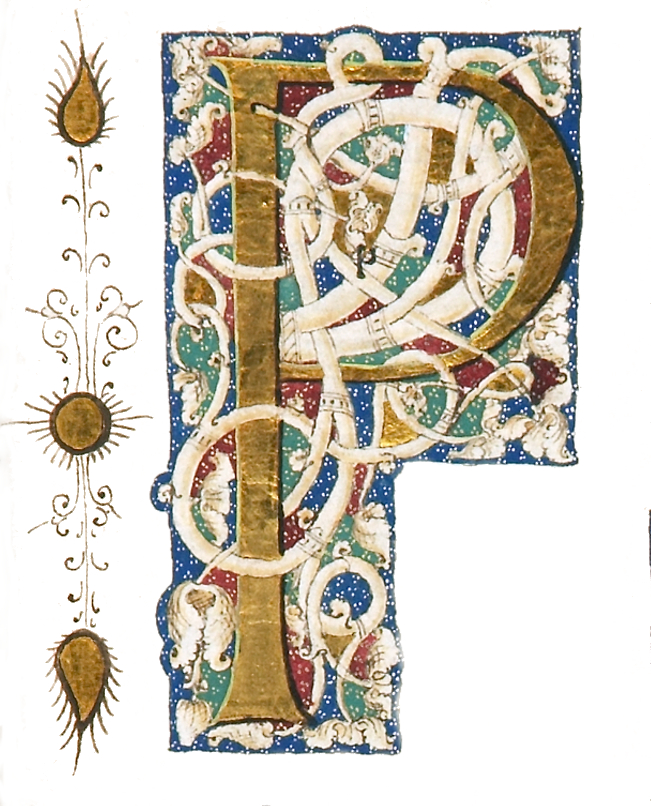21 November 1581 · London
by (QUEEN ELIZABETH I). (EARLY DOCUMENT ON VELLUM)
London, 21 November 1581. Document: 295 x 475 mm. (11 5/8 x 18 3/4"). Seal: approximately 100 mm. (4") in diameter. Single column, 22 lines in a documentary hand.
WITH A FINE EXAMPLE OF THE COURT OF COMMON PLEAS SEAL USED BY ELIZABETH I, attached on its original vellum tag, the original matrix lugs partly untrimmed. Birch 949. ◆A little soiling to vellum, seal a bit worn and slightly muted at areas of highest relief (in particular the queen's face), some of the letters (particularly on the reverse) less distinct than others, but still AN EXCELLENT EXAMPLE, with modest signs of use.
This is a very fine example of an Elizabethan document, complete with an extremely well-preserved royal seal used by the Court of Common Pleas. During the long reign of Elizabeth I, the queen and those who served her used a variety of seals bearing her image. In addition to the largest and most obvious Great Seal (used by the Chancery to indicate a civil service document ordered in the queen's name) and her own Privy Seal (used for private or personal matters), there was the seal of the Court of Common Pleas (the court which dealt with civil suits not directly related to the monarch). The present document, issued in the 24th year of the monarch's reign, is attached to an excellent example of this third category of seals. The document is an "exemplification" (i.e., an official copy) of a ruling concerning the common recovery of property, allowing the sale of Markshall (or Marks Hall) Manor, located in Essex. Both the current owner, William Cole, and the buyers, Edward and Margaret Derehaugh, are named in the document, along with several other individuals relevant to the ruling. The renowned and highly respected judge James Dyer, Chief Justice of the Common Pleas from 1559-82, is also named in the first few lines. The level of detail preserved in the seal here is impressive, showing, on one side, Elizabeth powerfully enthroned, an orb in her left hand and a scepter in her right, and on either side of the queen a crowned Tudor rose and Fleur-de-Lys (symbolizing England and France). The opposite side of the seal features the royal arms of England supported by a hound and a dragon. The circumstances represented by the document are somewhat curious: William Cole is selling Markshall to his mother Margaret, who had been the wife of William's father John Cole, who died in 1567 or 1568. John had bought the manor of Markshall on 1 May 1562 from John Markeshall, whose family had owned the manor for nearly 500 years. For the record, according to Morant’s History of Essex, John Cole had paid £220 for the manor and two houses, four cottages, three tofts, four gardens, two orchards, 140 acres of arable land, 140 acres of pasture, 30 acres of woodland, 40 acres of marsh, and 15 shillings in rent in Markshal, Fering, and Earls Colne.. (Inventory #: ST20054)
WITH A FINE EXAMPLE OF THE COURT OF COMMON PLEAS SEAL USED BY ELIZABETH I, attached on its original vellum tag, the original matrix lugs partly untrimmed. Birch 949. ◆A little soiling to vellum, seal a bit worn and slightly muted at areas of highest relief (in particular the queen's face), some of the letters (particularly on the reverse) less distinct than others, but still AN EXCELLENT EXAMPLE, with modest signs of use.
This is a very fine example of an Elizabethan document, complete with an extremely well-preserved royal seal used by the Court of Common Pleas. During the long reign of Elizabeth I, the queen and those who served her used a variety of seals bearing her image. In addition to the largest and most obvious Great Seal (used by the Chancery to indicate a civil service document ordered in the queen's name) and her own Privy Seal (used for private or personal matters), there was the seal of the Court of Common Pleas (the court which dealt with civil suits not directly related to the monarch). The present document, issued in the 24th year of the monarch's reign, is attached to an excellent example of this third category of seals. The document is an "exemplification" (i.e., an official copy) of a ruling concerning the common recovery of property, allowing the sale of Markshall (or Marks Hall) Manor, located in Essex. Both the current owner, William Cole, and the buyers, Edward and Margaret Derehaugh, are named in the document, along with several other individuals relevant to the ruling. The renowned and highly respected judge James Dyer, Chief Justice of the Common Pleas from 1559-82, is also named in the first few lines. The level of detail preserved in the seal here is impressive, showing, on one side, Elizabeth powerfully enthroned, an orb in her left hand and a scepter in her right, and on either side of the queen a crowned Tudor rose and Fleur-de-Lys (symbolizing England and France). The opposite side of the seal features the royal arms of England supported by a hound and a dragon. The circumstances represented by the document are somewhat curious: William Cole is selling Markshall to his mother Margaret, who had been the wife of William's father John Cole, who died in 1567 or 1568. John had bought the manor of Markshall on 1 May 1562 from John Markeshall, whose family had owned the manor for nearly 500 years. For the record, according to Morant’s History of Essex, John Cole had paid £220 for the manor and two houses, four cottages, three tofts, four gardens, two orchards, 140 acres of arable land, 140 acres of pasture, 30 acres of woodland, 40 acres of marsh, and 15 shillings in rent in Markshal, Fering, and Earls Colne.. (Inventory #: ST20054)






